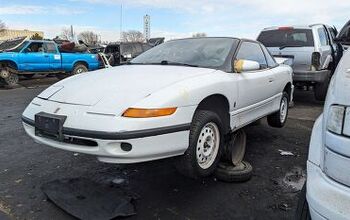With the Law Onside, a Cord Resurrection Is in the Works

Amelia Earhart owned one, and likely would have seen more sunsets had she chosen it as her ride of choice, instead of a Lockheed Electra.
It was one of the great American automobiles of the interwar era, and a favorite of matinee stars — a nameplate steeped in style, class and technological innovation. But, ultimately, short-lived.
Or was it? If one Texan has his way, we could soon see a small-scale revival of the Cord brand.
According to Hemmings, Craig Corbell, a Houston oil industry consultant and Cord aficionado, hopes to start production of new Cords. Building modern copies of a vehicle that vanished after 1937 is a tall order, but the law’s on Corbell’s side. Thank the Low Volume Motor Vehicles Manufacturers Act.
That law, passed late last year, allows low-volume replica automakers to bypass certain regulations, as long as the companies sell no more than 325 vehicles per year. Having an EPA or CARB-certified current model year engine under the hood is part of the deal.
So, the law that resurrected the DeLorean DMC-12 from its kitschy grave could soon do the same for Cord. As the first American car with front-wheel drive, the upscale Cord brand (a subsidiary of Auburn) bowed in 1929 with the L-29 model. That vehicle met a Great Depression-related death in 1932. However, it is the iconic 810 model of 1936 that most enthusiasts associate with the brand. Featuring a low-slung, running board-free body, “coffin nose” prow and flip-up headlamps, the 810 (and 812 of 1937) remains a standout in the world of automobile styling.
One a couple of thousand 810 and 812 models left the factory before the Cord brand went light-out.
In the hopes of one day realizing his dream, Corbell bought the Cord trademark in 2014 and closely followed the passage of the low-volume vehicle law. Claiming to be in talks with automakers, Corbell wants to have a display vehicle ready for the fall of 2017.
“Until now it was cost prohibitive to manufacture these cars profitably,” he said in a recent media release. “But now that expensive high speed crash testing, for example, is no longer required to manufacture low runs of replicas, this makes tremendous sense.”
[Image: Jane Nearing/ Flickr ( CC BY-ND 2.0)]

More by Steph Willems
Latest Car Reviews
Read moreLatest Product Reviews
Read moreRecent Comments
- Tassos Tim is not that good with colors.The bright "pink" is not pink, but FUCHSIA. Both colors may look good on a woman's sweater, but not on steel panels.
- Tassos While I was a very satisfied owner of a much earlier Accord COupe 5 speed (a 1990 I owned from 1994 to 2016), I don't like the exterior styling of this one so much, in fact the 2017 sedan looks better. Or maybe it sucks in white. The interior of my 1990 was very high quality, this one looks so-so. The 157 k miles were probably easy highway miles. Still, Hondas are not Toyotas, and I remember the same service (like timing belt replacement) back then cost TWICE for an Accord than for a Camry. Add to this that it has the accursed CVT, and it's a no. Not that I am in the market for a cheap econobox anyway.
- 3-On-The-Tree My 2009 C6 corvette in black looks great when it’s all washed and waxed but after driving down my 1.3 mile long dirt road it’s a dust magnet. I like white because dust doesn’t how up easily. Both my current 2021 Tundra and previous 2014 Ford F-150 3.5L Ecobomb are white
- Bd2 Would be sweet on a Telluride.
- Luke42 When will they release a Gladiator 4xe?I don’t care what color it is, but I do care about being able to plug it in.


































Comments
Join the conversation
This is relevant to my interests.
Why lose all your money in those run-of-the-mill supercar company scams when you can lose it in a more well-meaning debacle?